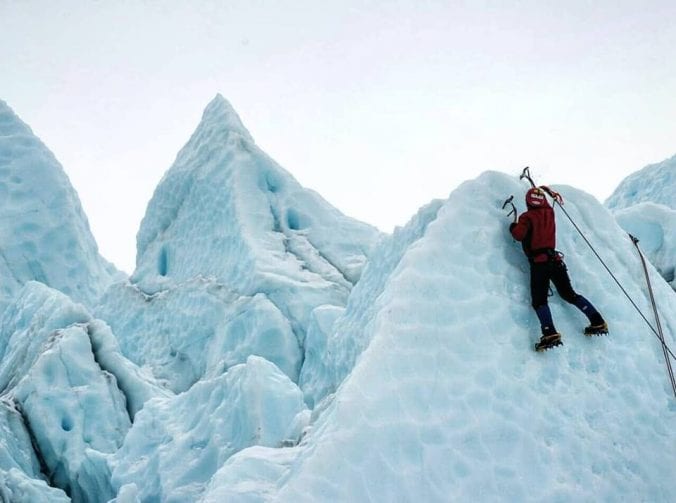Ailsa Harvey
Ice climbing, a sport evolved from rock climbing, involves ascending ice formations such as cliffs and rock slabs covered in ice, ice falls and frozen waterfalls.
The ice can be divided into two categories for climbing; alpine ice and water ice. Alpine ice climbing usually involves mountainous environments with the aim being to reach the summit. Alternatively, water ice is found mainly on cliffs or areas beneath water flow. Whilst alpine ice is created from frozen precipitation, water ice is frozen liquid flow and is generally more technically challenging.
When rock climbers reached high altitudes and the resulting ice, they were forced to find ways to navigate their surroundings and be able to explore further parts of the mountains. Using specialised equipment such as ice axes (to cut out steps or grip onto the ice like a handle) and crampons (to provide stability for the feet), climbers were able to manoeuvre more safely in the challenging and slippery conditions. This equipment enabled many others to enjoy the activity now known as ice climbing.
Did you know …
– Crampons were invented by Oscar Eckenstein in 1908. This meant less climbers had to use the technique of step cutting; a laborious method of cutting into solid ice to create foot holds.
– The first known ice climbing competition took place in 1912, on the Brenva Glacier in Courmayeur, Italy.
– British ice climber, Tom Ballard, became the first person to solo climb all 6 major North faces in the Alps in one winter.
Check out PACE News’ most recent article to hear from Team GB’s youngest ice climber, Caitlin Connor – Climber.



Leave a Reply